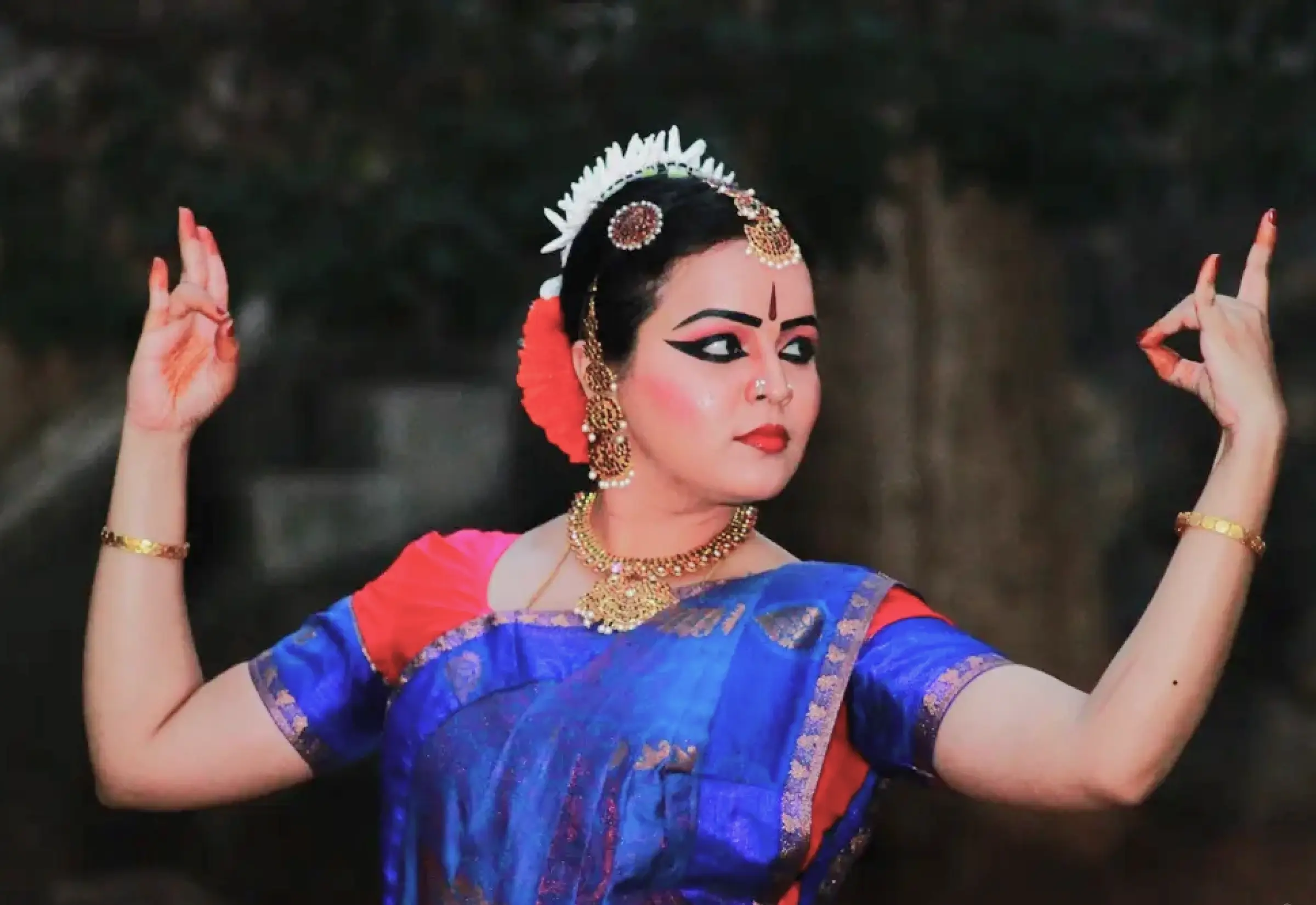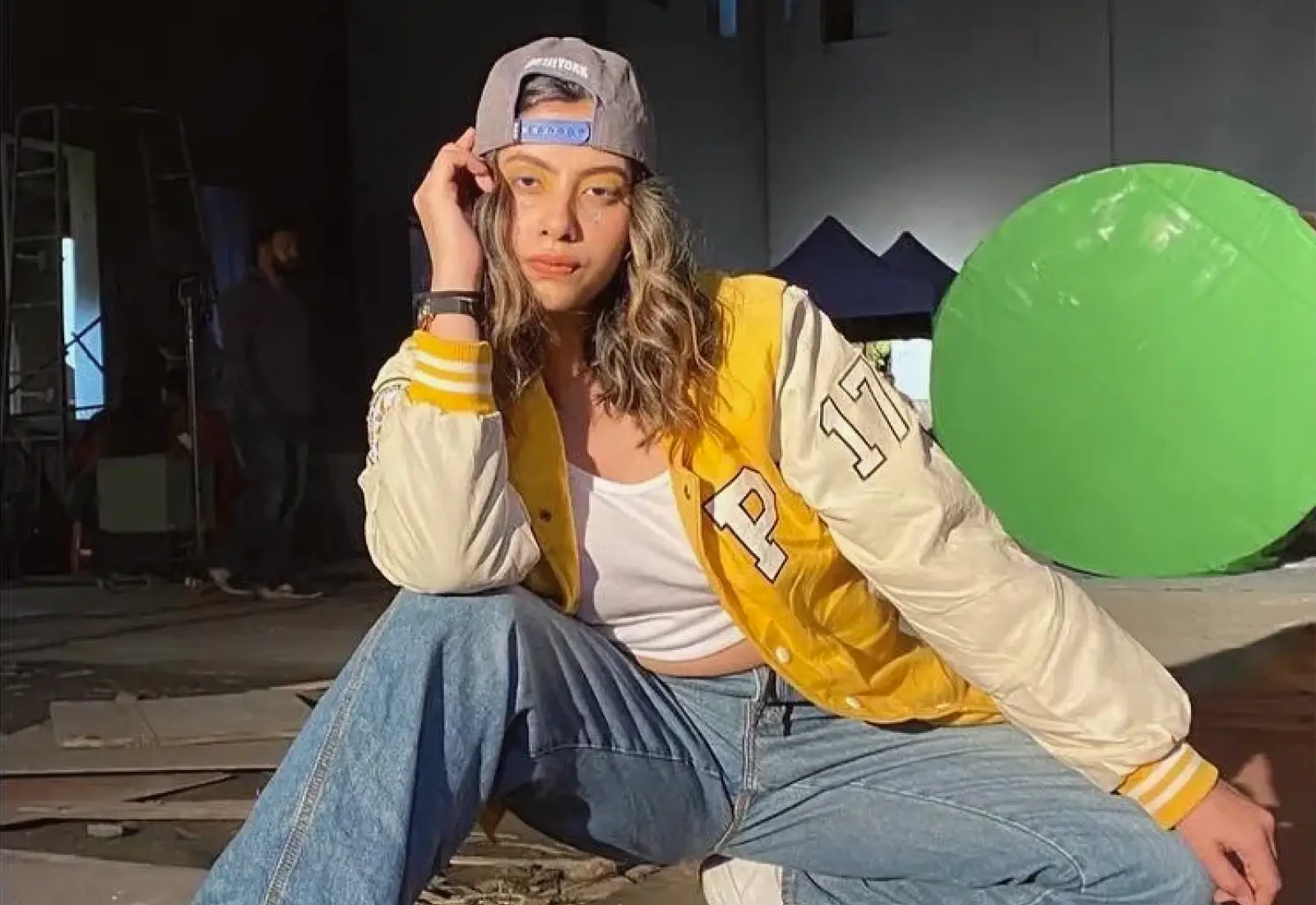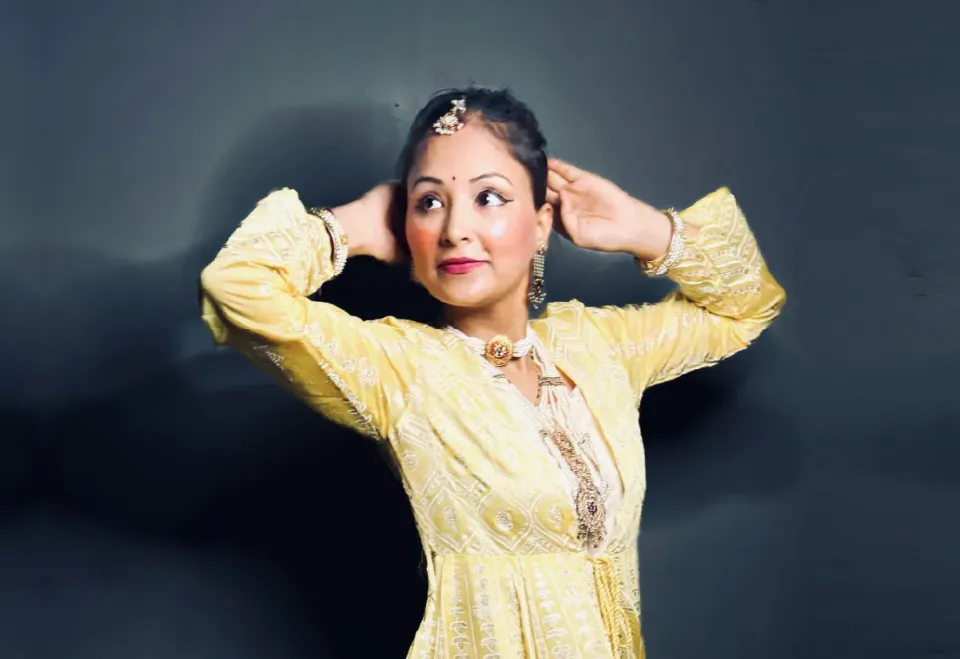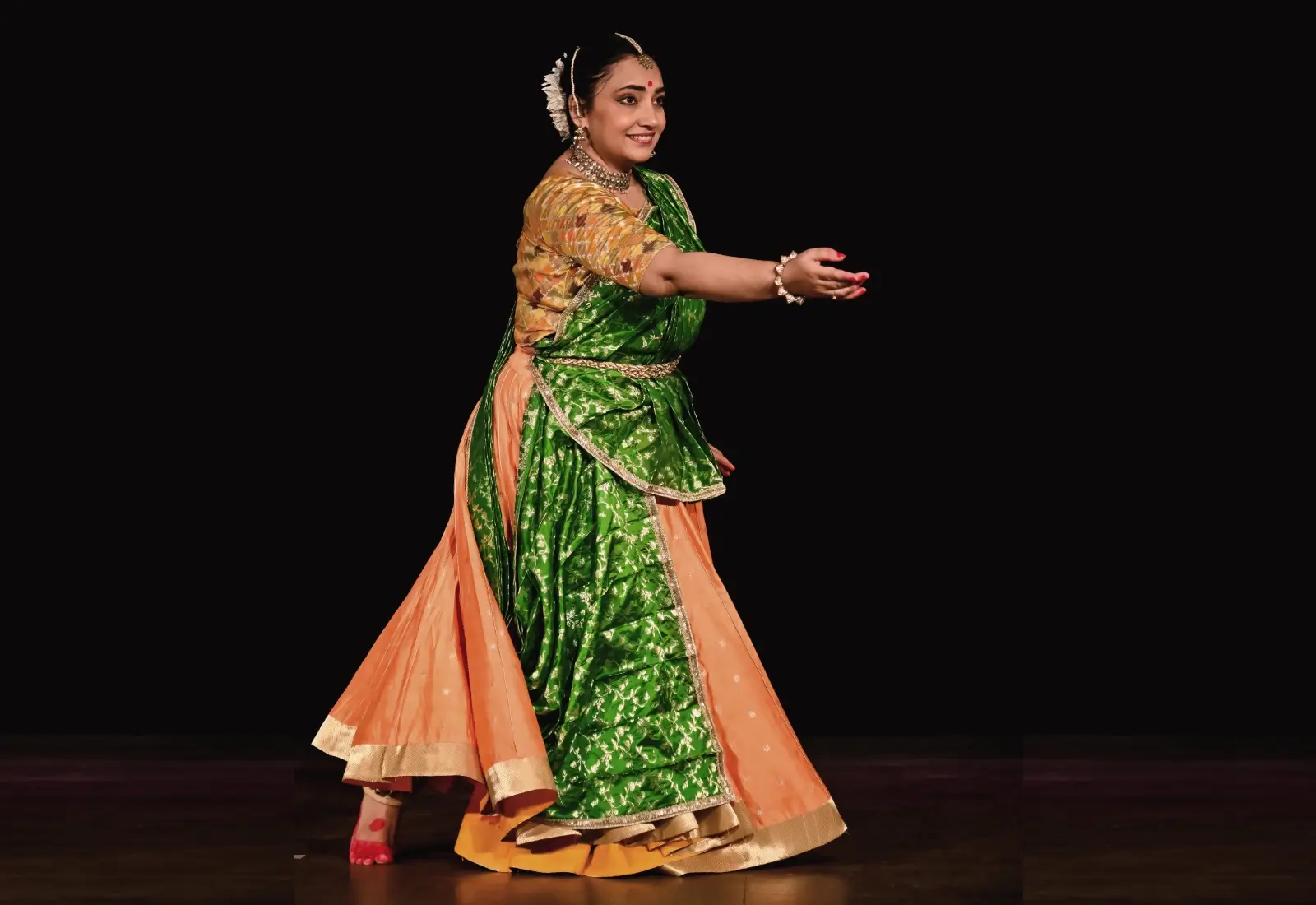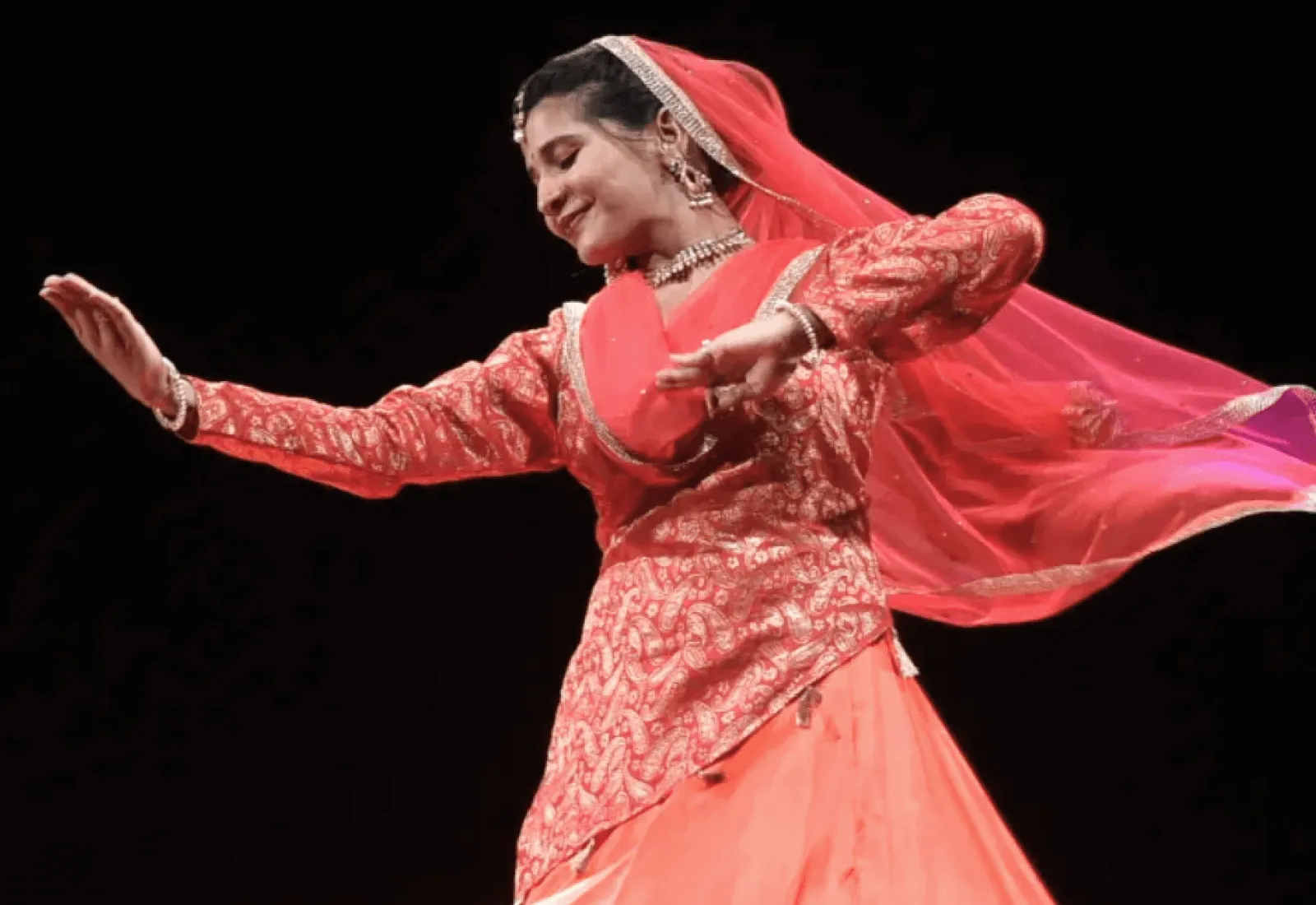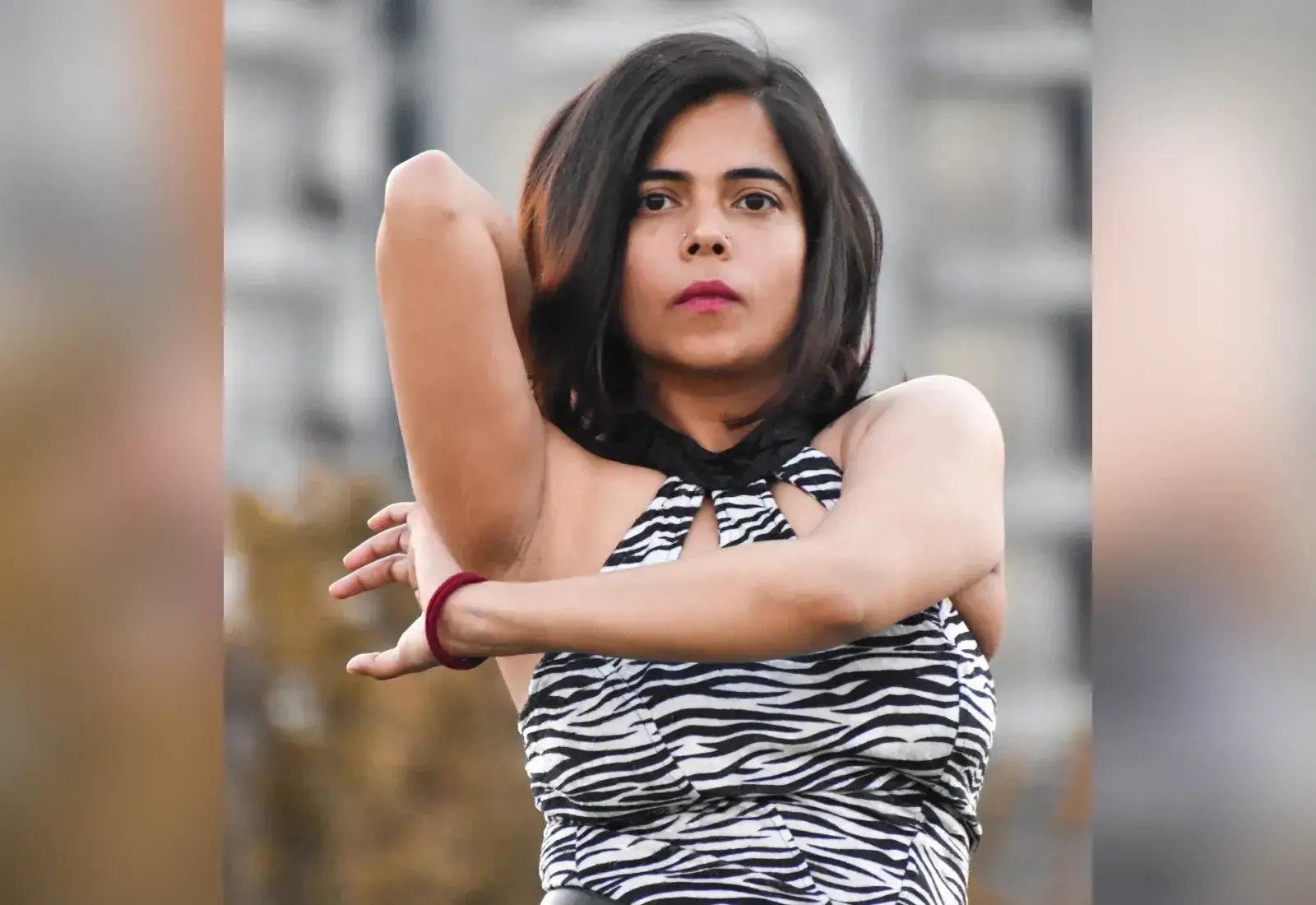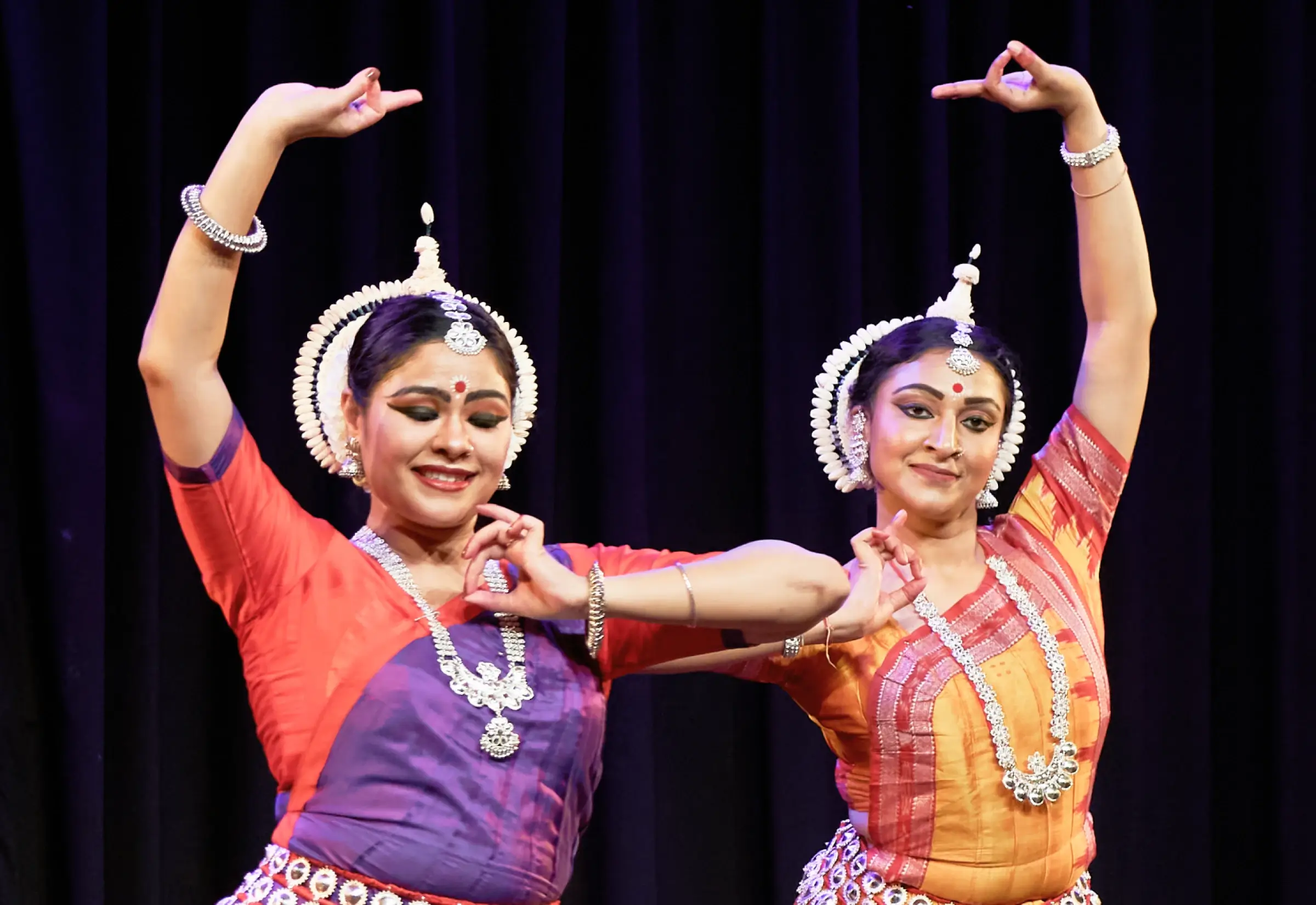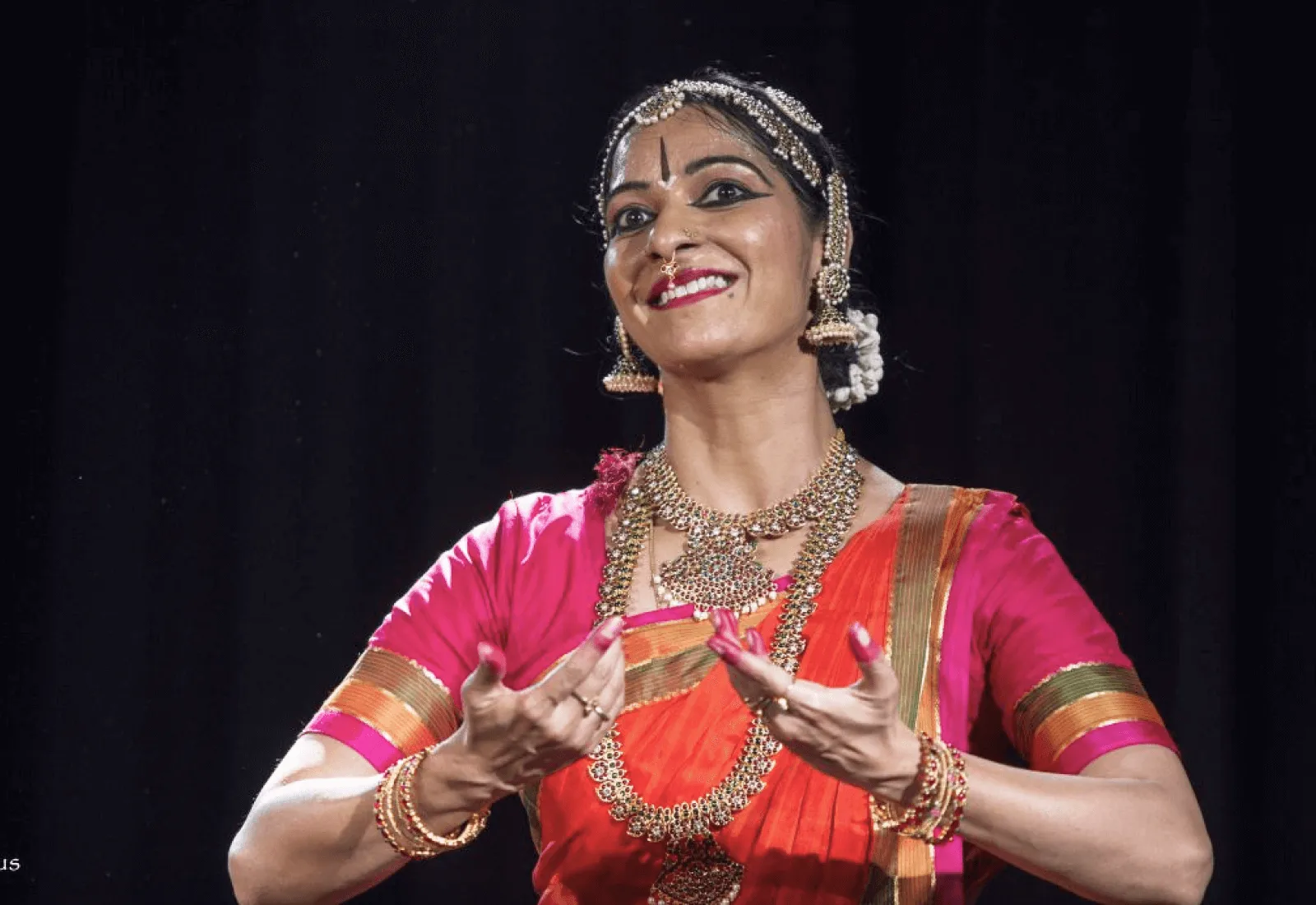Bollywood Dance Overview
Bollywood dance is a vibrant and dynamic dance form that originated from the Indian film industry, blending traditional and folk Indian dance styles with modern Western influences.
In the 1970s the term Bollywood was coined. This was when a standard template or format for a Hindi film was set. This format included emotion, action, drama, romance, comedy, music, and dance and proved to be a proven formula for mass entertainment. The term Bollywood could be derived from the combination of "Bombay" (now Mumbai) and "Hollywood," or maybe the ‘Hollywood of Bombay’.
Bollywood dance has been a significant facilitator of entertainment in Hindi films. Over the years, it has evolved into a cultural phenomenon that represents a fusion of East and West, tradition and modernity.
Characterized by lively gestures, dramatic facial expressions, and energetic body language, Bollywood dance serves as a medium for storytelling, vividly conveying emotions and narratives through movement.
History of Bollywood Dance
Early 20th Century
Bollywood dance traces its origins to the early 20th century, coinciding with the rise of Indian cinema. The film Alam Ara was the first film to introduce sound in cinemas. Along with it music and dance were also introduced.
In its early stages, Bollywood films heavily incorporated classical Indian dance forms such as Kathak and Bharatanatyam. Kathak, known for its intricate footwork and expressive storytelling, and Bharatanatyam, a temple dance emphasizing graceful movements and hand gestures (mudras), formed the foundation of Bollywood choreography. Additionally, folk dance traditions like Bhangra from Punjab and Garba from Gujarat were integral to the choreography, imbuing early Bollywood films with a distinct Indian cultural identity.
During the black-and-white era of the 1940s and 1950s, dance in Bollywood films was more restrained and elegant, often reflecting the socio-cultural norms of the time. Dance sequences were used primarily for narrative purposes, where each movement conveyed deep emotions and helped enhance the story.
Impact of Playback singing on Bollywood Dance Sequence
The next shift took place when playback singing was introduced in Bollywood in 1935. It had a profound impact on dance sequences, fundamentally transforming how music and movement were integrated in Indian cinema.
Enhanced Mobility for Actors
Before playback singing became prevalent in the 1930s, actors sang their own songs while performing, which limited their ability to engage in elaborate dance routines. The simultaneous recording of sound and image posed challenges, as the physical exertion of dancing affected the quality of the vocal performance. With playback singing, actors could lip-sync to pre-recorded tracks, allowing them greater freedom of movement and enabling choreographers to design more intricate and visually stunning dance sequences that were not constrained by the need for live singing.
Integration of Music and Dance
The ability to use playback singing facilitated a seamless integration of music and dance within the narrative structure of films. This innovation allowed filmmakers to craft elaborate dance sequences that were synchronized with the music, enhancing the emotional impact of scenes. As a result, dance became an essential storytelling tool in Bollywood films, contributing significantly to character development and plot progression. Iconic choreographers began to emerge during this period, creating memorable dance numbers that resonated with audiences and became synonymous with Bollywood cinema.
Evolution of Dance Styles
The shift to playback singing also encouraged the exploration of diverse dance styles. Choreographers began to incorporate various influences, including Western styles like jazz and rock 'n' roll, into Bollywood dance routines. This fusion led to a more dynamic and versatile form of expression on screen.
1960s-1970s: The Golden Age and Fusion of Styles
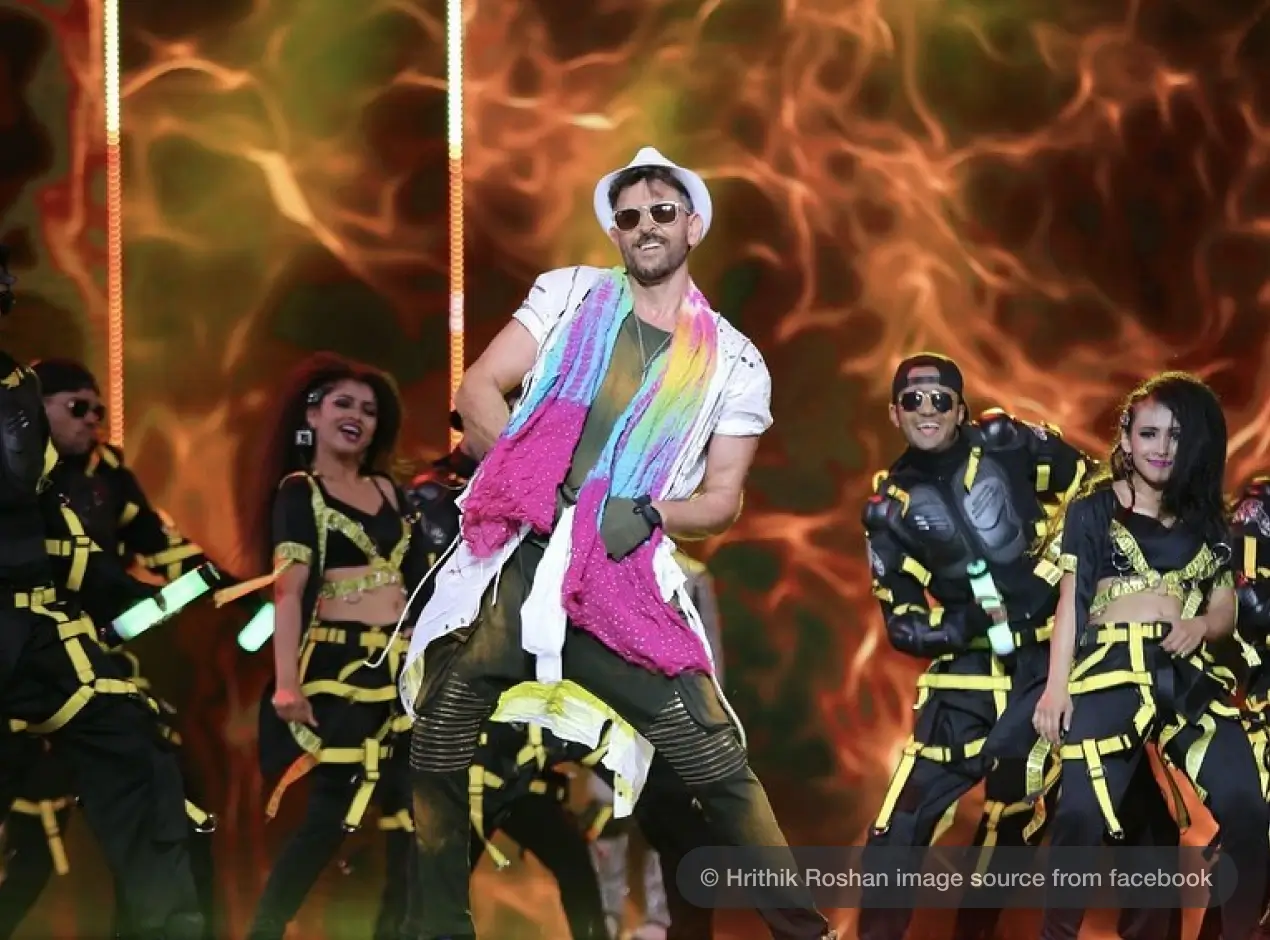
The 1960s and 1970s marked a turning point in Bollywood dance, often referred to as the "Golden Age" of Indian cinema. This period witnessed a gradual fusion of Indian and Western dance styles. Western influences, such as jazz, rock and roll, and cabaret, began to seep into Bollywood films. Legendary performers such as Helen, often credited as Bollywood’s first "item girl," introduced Western moves and aesthetics to Bollywood, blending them with traditional Indian elements. This fusion of styles became a defining feature of Bollywood choreography, which began to move beyond the classical roots while still retaining an Indian essence.
1980s-1990s: Disco, Pop Culture and Global Appeal
By the 1980s and 1990s, Bollywood dance had evolved into larger-than-life, synchronized dance numbers, often filmed in extravagant locations with grand sets and costumes.
Integration of Disco Music
The rise of disco music in the late 1970s introduced new rhythms and beats to Bollywood films. Composers like Bappi Lahiri and Biddu began incorporating disco elements into their soundtracks, creating catchy, upbeat songs that became integral to film narratives. The film "Disco Dancer" (1982) exemplified this trend, featuring energetic dance numbers set to disco tunes that resonated with audiences. Songs such as "I Am a Disco Dancer" became iconic, reflecting the popularity of this new musical style in Indian cinema.
Influence on Choreography
Disco culture encouraged choreographers to experiment with Western dance forms, leading to a fusion of styles that included jazz, breakdancing, and hip-hop. Notable choreographers like Saroj Khan began to blend traditional Indian dance techniques with contemporary Western influences, resulting in more dynamic and visually engaging performances. This era marked a shift from classical styles to more freestyle and energetic choreography that matched the upbeat nature of disco music.
Aesthetic Changes
The disco era brought significant changes to the visual presentation of Bollywood dance. Costumes became more glamorous and colorful, often featuring shiny fabrics and bold patterns that reflected the vibrant disco scene. The incorporation of modern set designs, elaborate lighting, and flashy props contributed to the overall spectacle of dance sequences, making them more appealing to audiences.
Cultural Impact
Disco in Bollywood also mirrored broader social changes in India during this time. The portrayal of dance sequences often depicted themes of celebration and self-indulgence, aligning with the carefree spirit of disco culture. Films showcased glamorous settings where characters danced in lavish parties or nightclubs, reinforcing the aspirational lifestyle associated with disco.
Legacy and Continued Influence
The influence of disco on Bollywood dance laid the groundwork for future trends in Indian cinema. The energetic style established during this period continued to resonate in later decades, with many songs from the disco era being remixed or referenced in contemporary films. The legacy of artists like Bappi Lahiri and singers such as Nazia Hussain remains significant in shaping Bollywood's musical landscape.
Iconic choreographers such as Saroj Khan and Farah Khan played pivotal roles during this period, introducing more structured, synchronized group dances. Their contributions revolutionized Bollywood choreography, with dance sequences becoming a key element in Bollywood films.
In the 1990s, Bollywood witnessed a cultural shift, heavily influenced by Western pop and MTV culture. Dance numbers became so popular that they sometimes outlasted the films they featured in. The accessibility of Bollywood choreography, with its simpler, more replicable steps, contributed to its growing global popularity, especially among younger audiences.
21st Century: Bollywood Goes Global
In the 21st century, Bollywood dance became increasingly eclectic and internationally recognized. Films like Dilwale Dulhania Le Jayenge, Devdas, and Kabhi Khushi Kabhie Gham further propelled Bollywood onto the global stage. Choreographers such as Shiamak Davar and Remo D'Souza introduced a wide array of international dance forms into Bollywood, including hip-hop, salsa, contemporary, and street dance.
Bollywood dance in the modern era is known for its high-energy routines, athleticism, and sophisticated choreography, with a mix of global dance styles. Dance became an essential feature in Bollywood films, with performances showcased not only in cinemas but also at international events, award shows, and even global dance competitions.
Contemporary Influence
Today, Bollywood dance is not just a film element but a global cultural ambassador. It has transcended Indian cinema, with Bollywood dance workshops, flash mobs, and performances gaining popularity in major cities like New York, London, and Sydney. Bollywood dance has appeared on international dance reality shows, bringing the art form to a wider audience.
Bollywood dance's ability to blend traditional Indian roots with modern global influences has allowed it to remain relevant and appealing. This adaptability and inclusivity make Bollywood dance accessible to people of all ages and backgrounds.
Types of Dance Styles in Bollywood
Bollywood dance is a vibrant fusion of classical Indian traditions and modern global influences, creating dynamic and colorful choreography that is iconic in Indian cinema. From traditional Indian dance forms to contemporary Western genres, Bollywood dance encompasses a wide array of styles that captivate and inspire audiences worldwide.
1. Classical Indian Dance Forms: The Cultural Backbone
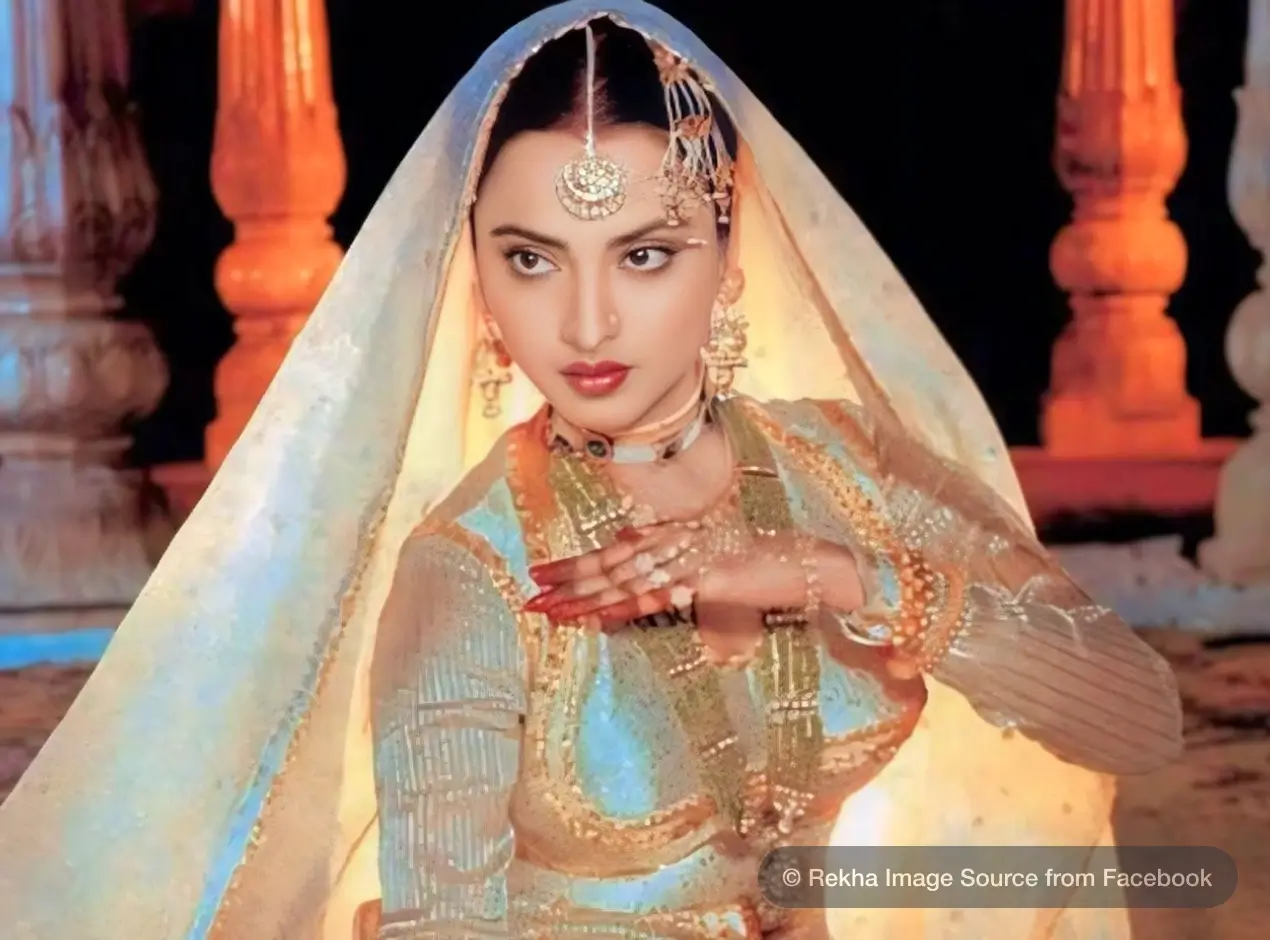
Bollywood dance draws heavily from classical Indian dance traditions, which provide the grace, elegance, and expressive storytelling that underpin much of its choreography.
- Kathak: Originating in northern India, Kathak is known for its intricate footwork, swift spins, and expressive hand gestures. This classical form is often used in Bollywood to convey emotions and narratives through gestures (mudras) and facial expressions.
- Bharatanatyam: One of India’s oldest classical dance forms, Bharatanatyam is noted for its precise movements, strong postures, and dramatic expressions. It is commonly featured in Bollywood’s traditional scenes, often depicting devotion or intense emotional moments.
- Odissi and Kuchipudi: Though less frequent in Bollywood, elements of Odissi and Kuchipudi have been incorporated into dance sequences. These classical styles focus on graceful, flowing movements and are often used to enhance spiritual or culturally significant scenes.
2. Folk Dance: The Spirit of India’s Diversity
Bollywood has also drawn inspiration from India’s diverse regional folk dances, which add a unique energy and flavor to celebratory scenes.
- Bhangra: Originating from Punjab, Bhangra is a high-energy dance characterized by powerful, rhythmic movements. It is frequently used in Bollywood for wedding scenes, celebrations, and festivals.
- Garba and Dandiya: These dances from Gujarat are known for their circular movements, clapping, and the use of sticks (Dandiya). They are often featured in Bollywood during traditional celebrations, particularly around the festival of Navratri.
- Lavani: A fast-paced dance from Maharashtra, Lavani combines rhythmic footwork with a sensual, powerful presence. It is often used in Bollywood songs that celebrate femininity and strength.
Also Read - Top 10 Bollywood Dance Songs
3. Western Dance Genres: A Modern Twist
As Bollywood expanded its global reach, Western dance styles began to influence its choreography, adding a contemporary dimension to the genre.
- Hip-Hop: Hip-hop has become one of the most prominent Western influences in Bollywood, bringing urban, street-style energy to dance sequences. Breakdancing, popping, and locking are commonly seen in contemporary Bollywood films.
- Jazz: Introduced to Bollywood in the 1960s and 1970s, jazz added a cabaret-like sophistication to the choreography. Today, jazz continues to influence Bollywood dance, lending smooth and elegant movements to modern film sequences.
- Salsa and Latin Dance: Latin styles such as salsa, samba, and flamenco have become popular in Bollywood’s romantic scenes, adding sensuality and flair to duets and intimate performances.
- Contemporary Dance: Drawing from ballet and modern dance, contemporary dance has found its place in Bollywood, particularly in emotionally charged sequences. Its fluid movements allow for interpretive storytelling and are often featured in dream sequences or artistic performances.
4. Fusion Dance: A Blend of Cultures and Eras
Bollywood dance is renowned for its ability to blend various dance forms, resulting in innovative choreography that bridges Indian traditions and Western modernity.
- Bolly-Hop: A fusion of Bollywood and hip-hop, Bolly-Hop combines expressive Bollywood movements with high-energy hip-hop beats. This style is often seen in dance competitions and upbeat film songs.
- Indo-Contemporary: A fusion of Indian classical or folk movements with Western contemporary dance, Indo-Contemporary is frequently used in emotional performances, blending the traditional grace of Indian dance with the fluidity of contemporary styles.
- Bollywood-Masala: Known for its all-encompassing fusion of classical, folk, and Western styles, Bollywood-Masala is the quintessential Bollywood dance style. It features high-energy, visually captivating choreography that appeals to diverse audiences.
5. Freestyle Bollywood Dance
Freestyle Bollywood dance is inclusive and allows dancers of all levels to participate. This style incorporates elements from various genres but emphasizes personal interpretation and enjoyment. Freestyle Bollywood dance is often seen in group performances, weddings, and flash mobs, where the focus is on celebration, creativity, and communal energy.
Bollywood Dance Choreography
Bollywood choreography is much more than just a series of dance steps—it's an art form that brings together movement, music, and narrative to create a spectacle on screen. It’s the pulse of Bollywood films, transforming ordinary scenes into visually captivating performances, adding depth to emotions, and turning songs into unforgettable cinematic moments. Whether it’s a grand wedding sequence or an intense emotional expression, Bollywood choreography plays a vital role in shaping the film's storytelling and overall experience.
1. Storytelling Through Dance
At the heart of Bollywood choreography is storytelling. Each dance number is crafted to advance the narrative of the film, convey emotions, or highlight key moments in the storyline. The best Bollywood choreographers specialize in the art of using dance as a language, translating the feelings of the characters into movement, creating a deeper emotional connection between the audience and the story.
- Emotional Expression: Bollywood choreography often mirrors the emotions of the characters—be it joy, sorrow, love, or anger. Through carefully designed gestures, facial expressions, and body movements, dancers bring the character’s inner world to life. In romantic scenes, soft and graceful moves reflect tenderness, while energetic, sharp steps in action sequences convey tension or conflict.
- Symbolism in Movement: Bollywood dance often uses symbolic gestures and postures to convey specific meanings. For example, subtle hand movements or head tilts might symbolize flirtation or shyness, while expansive arms and powerful leaps express freedom or victory. Choreographers pay close attention to these nuances, ensuring that every step contributes to the narrative.
2. Visual Grandeur
Bollywood choreography is known for its grandeur and spectacle. From large-scale group performances to intricately designed solo acts, every dance sequence is a visual treat. The choreography isn’t just about the moves—it’s about creating a larger-than-life experience that leaves a lasting impact on the audience.
- Group Synchronization: One of the defining features of Bollywood choreography is the elaborate group dances. Whether it's a festive wedding scene or a celebratory song, synchronized movements performed by dozens of dancers add to the visual impact. The coordination between the dancers creates a sense of unity and rhythm, enhancing the energy of the performance.
- Stunning Locations and Sets: Bollywood choreographers often make use of grand sets or stunning outdoor locations to heighten the visual appeal of the dance. Be it the palatial sets of historic dramas or the scenic landscapes in romantic songs, the choreography is designed to blend seamlessly with the surroundings, turning the entire environment into a part of the performance.
3. Fusion of Dance Styles: An Ever-Evolving Art
Bollywood choreography is a beautiful fusion of traditional Indian dance forms with modern, global influences. This dynamic mix keeps Bollywood dance fresh and constantly evolving, allowing choreographers to experiment with styles and movements to suit the changing trends in both Indian and international cinema.
- Blending Classical with Modern: Classical Indian dance styles like Kathak, Bharatanatyam, and Odissi often form the base of Bollywood choreography, especially in period films or culturally rooted stories. However, choreographers have skillfully integrated these classical movements with modern dance genres like hip-hop, jazz, and contemporary dance. This blending of styles creates a unique dance vocabulary that is both rooted in tradition and forward-looking.
- Cultural Adaptability: Bollywood choreography reflects India’s diverse cultural landscape, but it also embraces global influences. Whether it’s the incorporation of salsa steps in a romantic duet or the use of breakdancing in a street dance-off, Bollywood dance is a melting pot of cultures. This adaptability makes Bollywood choreography relevant to a global audience, crossing boundaries and resonating with people from different parts of the world.
4. The Role of Music: Rhythm and Melody in Motion
Music is the soul of Bollywood choreography. The dance steps are intricately tied to the rhythm and melody of the song, with choreographers creating moves that reflect the musical dynamics—whether it’s a soft, melodic tune or an upbeat, fast-paced track.
- Responding to the Beat: Choreographers design their movements in response to the rhythm of the music, often using the beat to structure the choreography. Fast beats call for energetic, quick-footed dance steps, while slower songs require smooth, flowing movements. This synchronization between dance and music creates a harmonious visual experience that enhances the song’s emotional power.
- Musical Phrasing and Improvisation: In some Bollywood numbers, choreographers use improvisation to create spontaneous, unpredictable movements that reflect the music’s phrasing. This adds a layer of creativity and surprise to the dance, keeping audiences engaged and creating memorable, iconic moments.
Bollywood Dance Costumes
Bollywood dance is as much about the costumes as the moves. These vibrant and expressive outfits are essential to the visual appeal of each performance. Bollywood dance costumes combine traditional Indian attire with modern, global styles, adding texture, color, and character to every scene. Whether it's a grand wedding sequence or a street dance battle, these costumes enhance the audience’s connection to the story.
Traditional Roots
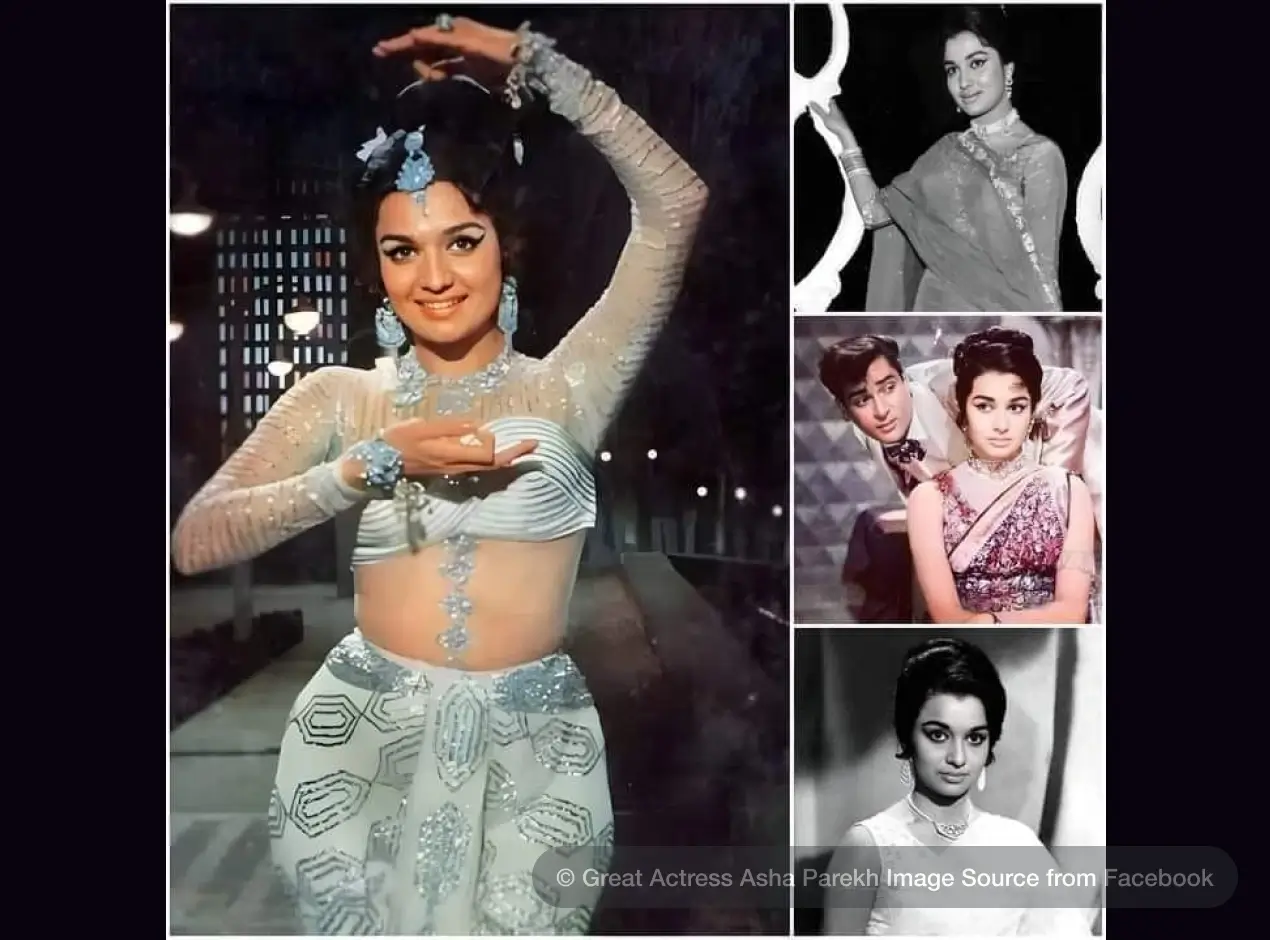
Bollywood dance costumes often reflect India's cultural heritage. Sarees and lehengas are common in classical or romantic dances, featuring intricate embroidery and luxurious fabrics. Male dancers may wear sherwanis or kurtas, bringing a regal touch to festive or period pieces. Bollywood also draws inspiration from regional folk dances, using colorful turbans and ghagras to celebrate India's diversity.
Fusion Fashion
Bollywood dance costumes also mix traditional Indian attire with Western fashion. Crop tops paired with lehenga skirts or Western-style gowns with Indian embroidery are common. For urban-themed songs, dancers might wear streetwear like jeans and sneakers, blending global styles with Indian flair.
Colors and Symbolism
Bold, bright colors dominate Bollywood dance costumes. Reds, yellows, and greens evoke joy and celebration, while colors like red often symbolize love, and white can represent purity or sorrow. These hues help convey the mood and emotion of the performance.
Embellishments and Accessories
Heavy embroidery, sequins, and mirror work elevate Bollywood costumes, catching the light and adding drama to the performance. Jewelry is key, with ornate necklaces, bangles, and anklets adding glamor. Footwear varies from ghungroos (ankle bells) in classical dances to sneakers in modern sequences, emphasizing the rhythm and style of each dance.
Costumes Across Dance Genres
Bollywood’s diverse dance styles require a variety of costumes. Classical dance numbers feature more traditional outfits like sarees, while folk dances use vibrant kurtas and ghagras. Contemporary performances lean toward casual, modern attire, reflecting Bollywood’s blend of global influences.
Trendsetting Costumes
Some Bollywood dance costumes have become iconic, influencing fashion trends. Madhuri Dixit's saree in Hum Aapke Hain Koun and Deepika Padukone's lehenga in Ram-Leela set new fashion standards, while Hrithik Roshan's urban outfits in Bang Bang inspired a new wave of casual, street-inspired dance fashion.


